DM168 GLOBAL REFLECTION
The Burning of Black Wall Street: Remembering the Tulsa Race Massacre and finding reparation 100 years on
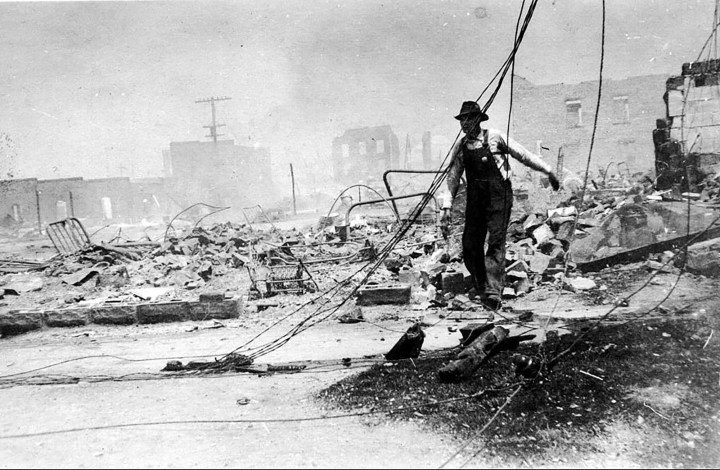
American history books seldom make mention of the events that exploded in Tulsa, Oklahoma, a century ago. But a spotlight is finally being shone on the community once shattered by violence – and silence.
First published in the Daily Maverick 168 weekly newspaper.
Tulsa, Oklahoma, is a medium-sized American city in a state midway between the vast Midwest plains and the South. It is often cited as one of the US’s most liveable cities for its size, with numerous cultural amenities and universities, parks and architecturally significant neighbourhoods, featuring Art Deco-style houses constructed in the early 1900s.
For much of the 20th century, Tulsa was effectively regarded as the capital of America’s petroleum extraction industry, ever since the first commercially productive oil well came on stream back in 1904.
It was even more of an oil town than its more southern rivals in Texas, Houston or Dallas, despite the image portrayed in the television series named for the latter. But Tulsa is also one of the core cities of America’s “Bible Belt”, with the born again, evangelical, fundamentalist-based Oral Roberts University located there.
Tulsa and the surrounding state of Oklahoma’s history is complex and multilayered, and much more than the bucolic paradise depicted in the Broadway hit, Oklahoma!
Sometimes seen as a frontier town all grown up, Tulsa was built on land that is now officially within the jurisdictions of several Native American tribes. Following recent court cases drawing on the historical nature of treaties between the federal government and those tribes, tribal law has come to have some say about things in Tulsa these days.
Before 1907, the entire state of Oklahoma had officially been delineated as Indian Territory for many decades. It was the destination for many Native Americans in their forcible relocation from the so-called “Five Civilized Tribes” of the southeastern US as they endured the “Trail of Tears” during the administration of Andrew Jackson – at least those who survived the journey.
During the Civil War, it was pulled within the orbit of the slave-owning Confederacy between 1861 and 1865. Oklahoma only became a state in 1907, after the Native American lands had been cut down by about half, and the other territory opened up for settlers in a famous, or infamous, land rush that has been depicted by Hollywood in films such as How the West Was Won.
But, beyond all that history, Tulsa was also the site for the most horrific race riot in America’s history – 100 years ago, 31 May to 1 June 1921. Actually, “race riot” isn’t quite the right term. It was more like an act of pillaging reminiscent of, say, sacking a city during the Thirty Years’ War than a racially tinged street brawl.
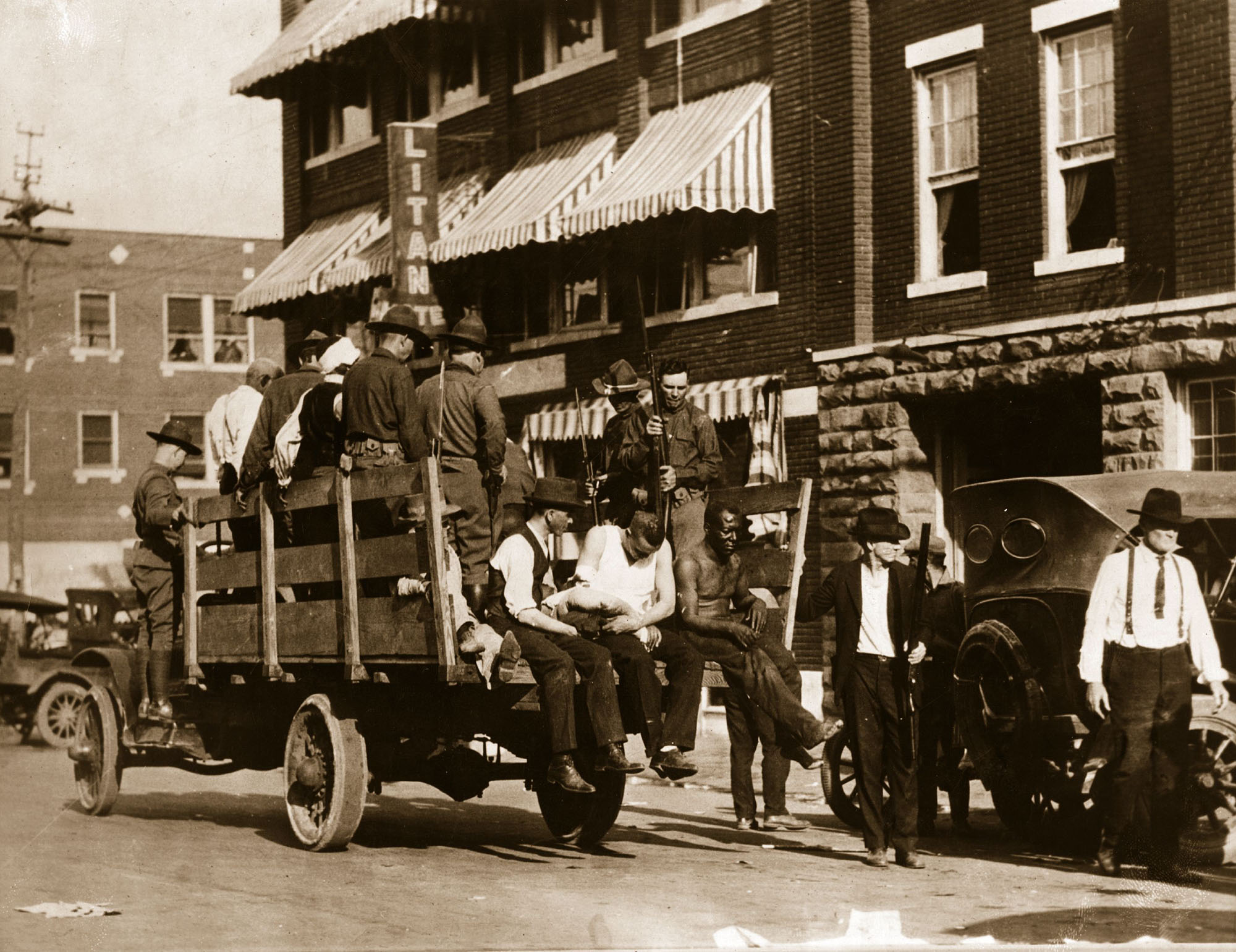
Injured and wounded men being taken to hospital by national guardsmen after racially motivated riots, also known as the Tulsa Race Massacre, during which a mob of white residents attacked Black residents and businesses of the Greenwood District in Tulsa, Oklahoma, US. (Photo: Hulton Archive / Getty Images)
In Tulsa, a large mob of white Tulsans descended on Greenwood, the city’s prosperous black neighbourhood, utterly destroying it and killing many of its inhabitants. These actions were triggered by the false rumour – fanned by a local race-baiting newspaper – that a young black man had acted suggestively towards a young white woman when they were both in an elevator in a local building.
In a profile of what is known for certain about that young man, Dick Rowland, The Washington Post noted Rowland had “liked to call himself ‘Diamond Dick’. Dick Rowland, a tall teenager with velvet skin, wore a diamond ring as he shined shoes in downtown Tulsa. Rowland (19) had recently dropped out of Booker T Washington High School, where he was a star football player, because he was making so much money polishing the shoes of oilmen in a city that billed itself as the ‘oil capital of the world’.
“On May 30, 1921, Rowland took a break from his shoe stand inside a pool hall and walked to the Drexel Building to use the only public restroom for Black people in segregated Tulsa. Rowland passed Renberg’s, a department store that occupied the first two floors of the Drexel Building, and stepped into an open wire-caged elevator operated by a 17-year-old white girl named Sarah Page.
“What happened next remains murky, according to historians and reports about one of the worst episodes of racial violence in US history. Rowland may have accidentally stepped on Page’s foot, prompting her to shriek. Or tripped and bumped into her.
“When the elevator doors reopened, Dick Rowland ran, and a clerk in Renberg’s called police. Rowland was arrested and accused of assaulting a white girl. Though the charges were eventually dropped and Page later wrote a letter exonerating him, the accusation was enough to infuriate White Tulsa.
“Three hours after the Tulsa Tribune hit the street with the headline ‘Nab Negro for Attacking Girl in Elevator’, hundreds of white men gathered at the Tulsa courthouse, where Rowland was being held. Black World War I veterans who wanted to protect Rowland from being lynched rushed to the courthouse to defend him. A shot was fired and ‘all hell broke loose’, a massacre survivor recalled later.”
And all hell breaking loose was just the beginning. By the time it was over, more than 1,000 buildings had been totally destroyed – restaurants, stores, banks, hotels, private homes – private property was looted and pillaged; many thousands were rendered homeless; and somewhere between several dozen and 300 people were killed.
No accurate tally exists even now, and virtually no graves have been positively matched with those who were killed during that period of racially based mayhem.
Order was only restored days later when units of the Oklahoma National Guard were finally called up for active duty service and were sent to the ravaged city.
No one was ever charged for any of the deaths or destruction, and no insurance company paid out on claims in the aftermath of the devastation. The lack of accuracy in the number of fatalities continues even now, because so few bodies were ever properly identified or buried in named gravesites.
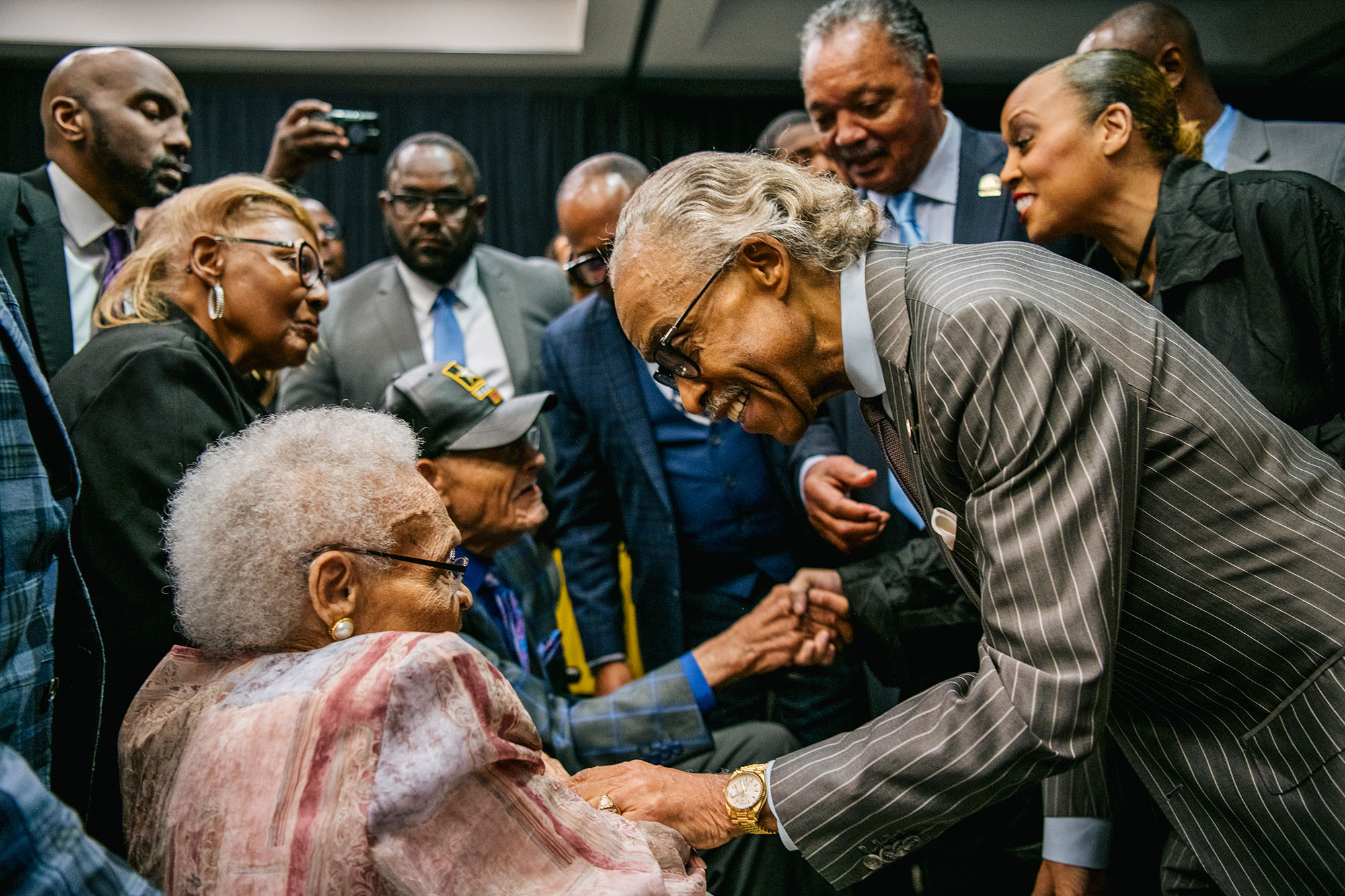
Survivors Hughes van Ellis and Viola Fletcher are greeted by Reverend Al Sharpton and Reverend Jesse Jackson on 1 June 2021 at a rally during commemorations of the 100th anniversary of the Tulsa Race Massacre in Tulsa, Oklahoma. (Photo: Brandon Bell / Getty Images)
Recently, however, a team of archaeologist-pathologists have begun examining some newly discovered unmarked graves to determine if the remains found in them are from those terrible days in 1921, or if they were from the influenza epidemic in the years just before the rioting.
No final conclusions have been reached yet and, as a result, the final resting spots for nearly all of the victims remain unknown. For the shattered community, however, closure never really occurred.
In fact, as a consequence of those days of rioting, an entire Tulsa neighbourhood and community was effectively erased. But this was no ordinary residential (albeit segregated) neighbourhood or a low-rent district deemed ripe for gentrification. Greenwood was frequently called America’s “Black Wall Street” as a result of its prosperity as part of a rapidly growing city, rising on the profits from the area’s petroleum boom.
For years, there were those deep, inextinguishable scars from the riot and the consequent death and destruction. Even now, there are, astonishingly, several very old individuals who survived the destruction of 100 years ago as babies, who are still alive and who hold on to their families’ memories.
But, over time, the hard reality of those events has gradually faded from view for the larger society. Those events were barely mentioned in history books or even taught about in Tulsa’s schools.
Otherwise knowledgeable civic leaders have said it was only recently, as adults, that they had come to learn about the death and destruction that bore down on Greenwood, right in the middle of their city.
This year, as an act of remembrance, IT specialists as well as AI and graphic artists, working for The New York Times, drew on old municipal records, maps and the information contained in a city investigating commission’s report from 20 years ago to construct a virtual reality version of Greenwood.
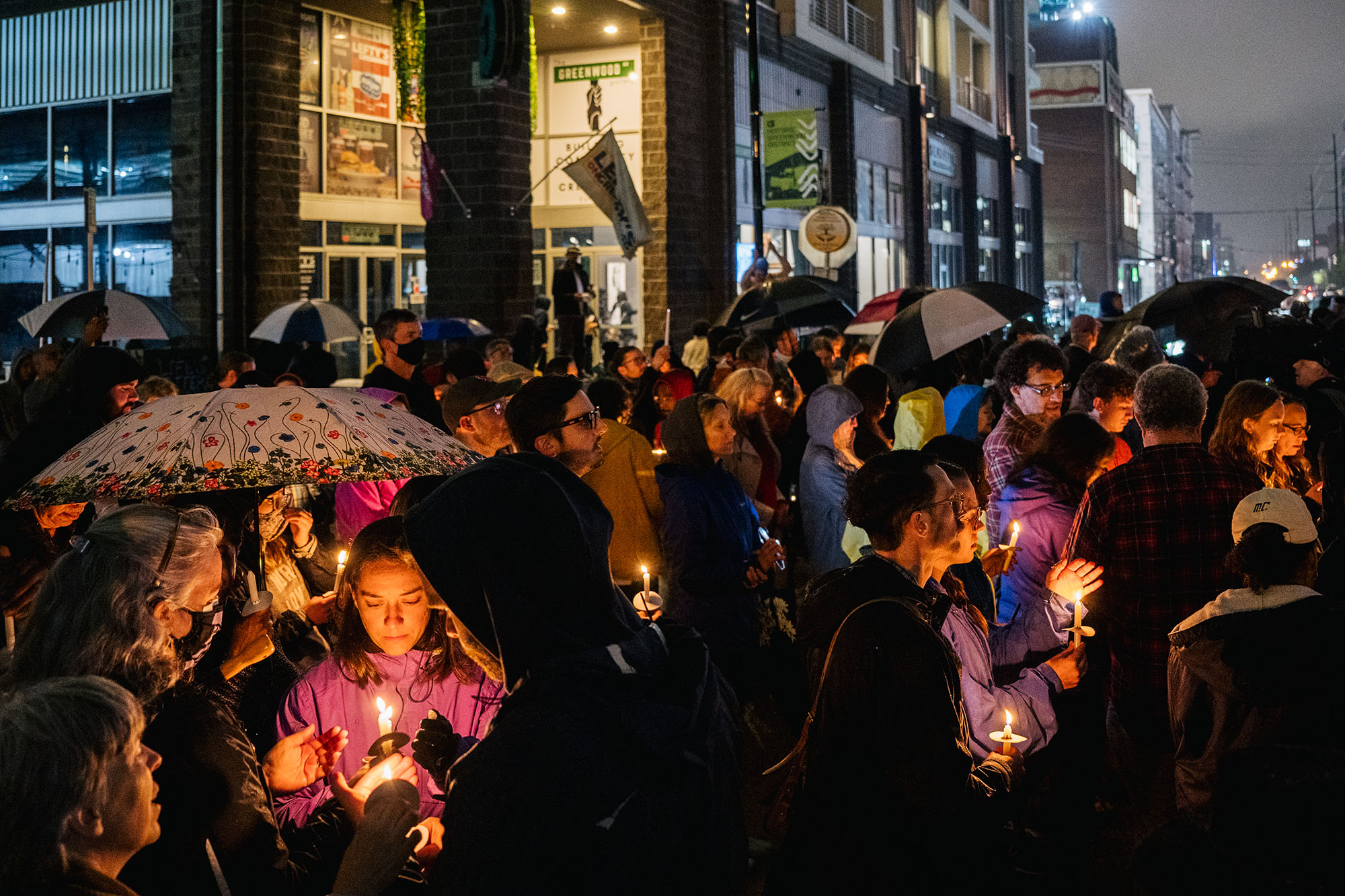
People partake in a candlelight vigil on 31 May 2021 in the Greenwood District during commemorations of the 100th anniversary of the Tulsa Race Massacre in Tulsa, Oklahoma. (Photo: Brandon Bell / Getty Images)
Moreover, television documentary filmmakers have also looked back at the riot, producing several searing explorations of the events. The New York Times explains: “The Tulsa race massacre of June 1, 1921, has gone from virtually unknown to emblematic with impressive speed, propelled by the national reckoning with racism and specifically with sanctioned violence against Black Americans. That awareness is reflected in the spate of new television documentaries on the occasion of the massacre’s 100th anniversary.”
Tulsa Burning: The 1921 Race Massacre (History), Dreamland: The Burning of Black Wall Street (CNN) and Tulsa: The Fire and the Forgotten (PBS) tell “overlapping stories of the horrific day when a white mob stormed through the prosperous Greenwood District of Tulsa, Okla[homa]… All three sketch the history of Black settlement in Oklahoma, where more than 40 Black towns existed in the early 20th century, and the singular success of Greenwood. Each carries the story into the present, covering the excavations carried out in 2020 looking for mass graves of massacre victims.”
Then, on 1 June, Joe Biden became the first US president to go to Tulsa to speak about this tragedy and its larger context. As Reuters reported: “Joe Biden on Tuesday became the first sitting US president to visit the site in Tulsa, Oklahoma, where hundreds of Black Americans were massacred by a white mob in 1921, and he said the legacy of racist violence and white supremacy still resonates.
“Biden came to Tulsa to put a spotlight on an event that epitomizes the country’s history of brutal racial violence, despite the massacre being largely under the radar in US classrooms and history books for years.
“‘We should know the good, the bad, everything,’ Biden said in a speech to the few survivors of the attack on Tulsa’s Greenwood district and their descendants. ‘That’s what great nations do. They come to terms with their dark sides. And we’re a great nation.’
“Biden said the deadly [6 January 2021] attack on the US Capitol and efforts by a number of states to restrict voting were echoes of the same problem. ‘What happened in Greenwood was an act of hate and domestic terrorism, with a through-line that exists today.’”
Any possibility of reparations to the remaining survivors of the Tulsa riot and their community now adds to the discussion about the possibilities of reparations for all African Americans descended from former slaves. (Previous efforts in the courts failed due to the statute of limitations.)
In the wake of exposés of police use of excess force or worse towards Black men, as well as a debate about how to teach about slavery and racial injustice in America’s public schools, the national conversation is returning to the vexed question of how racial equality under law can ever become equality in fact.
Or, as William Faulkner, the South’s most evocative writer, so famously remarked, “The past is never dead. It’s not even past.” DM168
This story first appeared in our weekly Daily Maverick 168 newspaper which is available for free to Pick n Pay Smart Shoppers at these Pick n Pay stores.

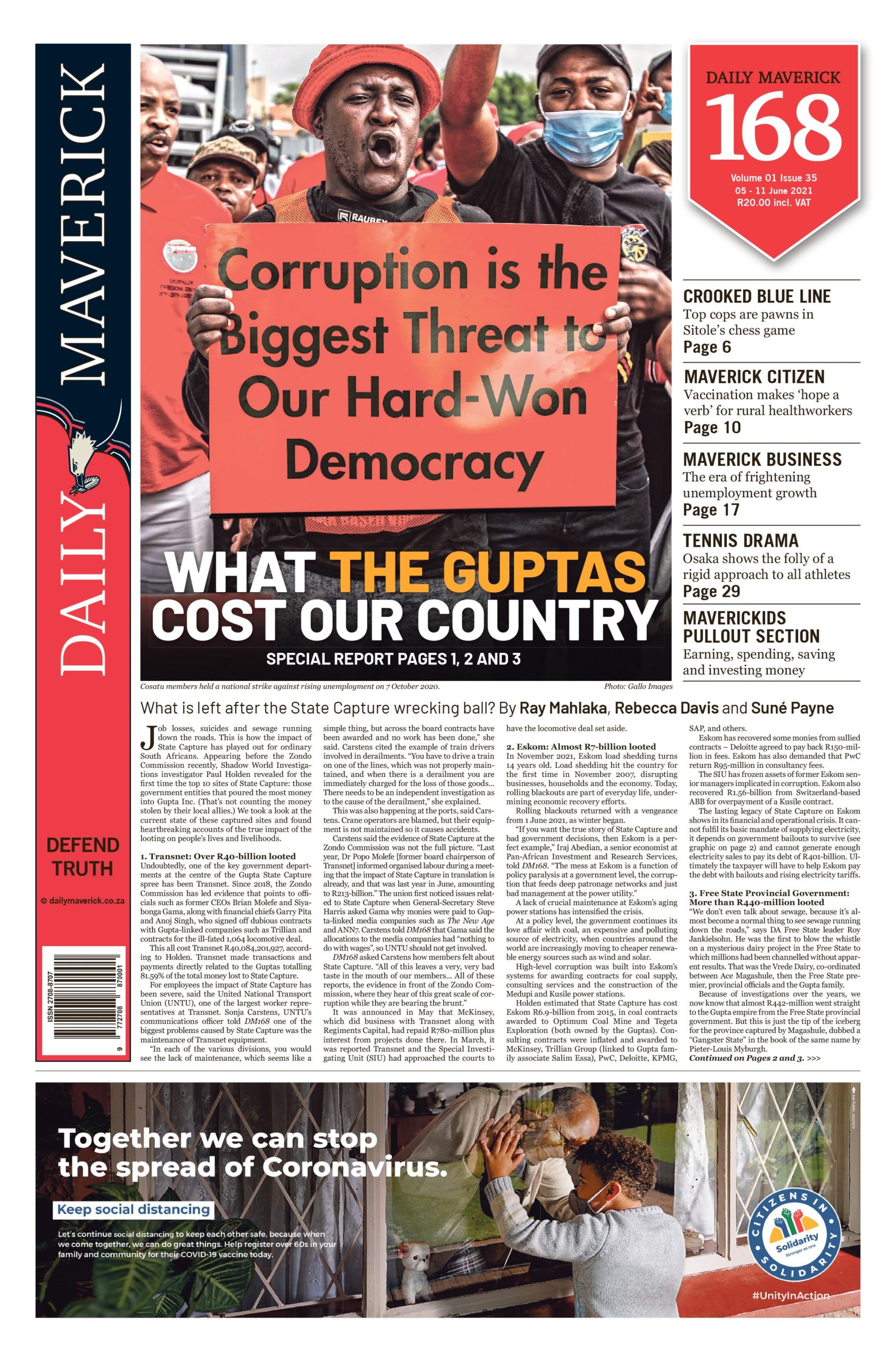

















 Become an Insider
Become an Insider
Comments - Please login in order to comment.